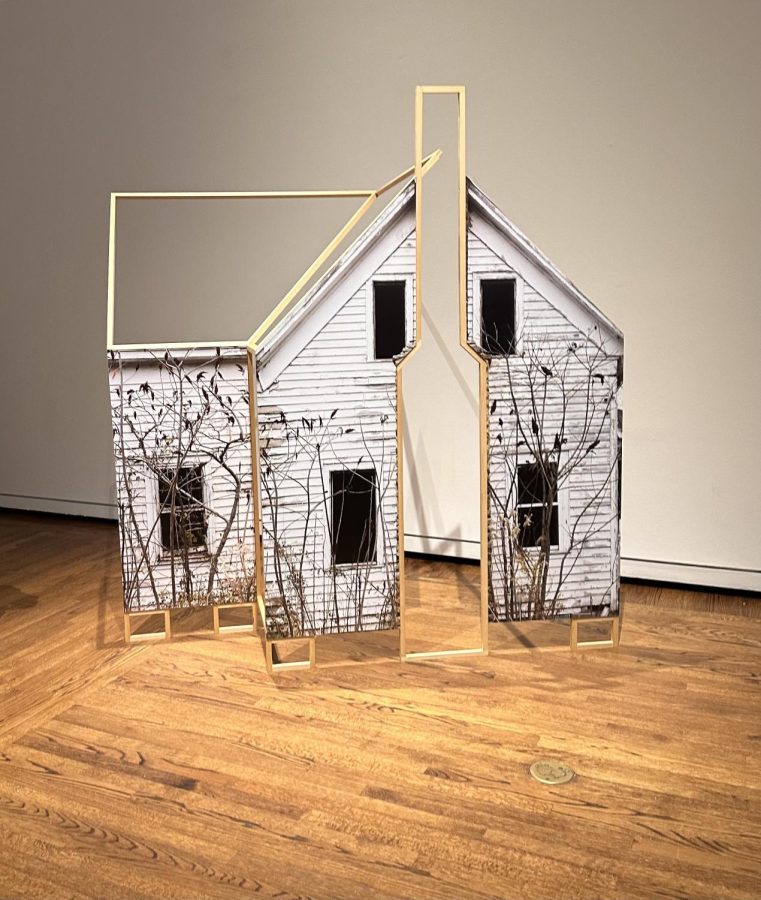What Does Home Mean to You: Exploring UMOCA’s Newest Exhibition
“House-Milton, GA” by Frank Poor (Photo by Heather Hopkins | The Daily Utah Chronicle)
April 10, 2023
Utah Museum of Contemporary Art has unveiled its newest exhibition, exploring many iterations surrounding the idea of home.
A Place Where Many Souls Are Gathered
The full exhibition title for UMOCA’s latest show is “Haimaz, Heimr, Hjem, Heem, Hām, Home.” All of these directly or roughly translate to “home.” Hām, however is a little more nuanced — it’s an Old English word meaning a place where many souls are gathered. This language lesson comes straight from UMOCA’s exhibition introduction: they note this idea of hām, or soul gathering, was the guiding principle in their creation of this exhibition.
While this is one of the more idyllic ways to view the idea of home, unfortunately, home isn’t a haven for everyone. Homes are as diverse as the individuals that occupy them. A home can represent peace and security, but as the artists depict in this multifaceted show, they can be a place of sadness, trauma or instability.
A Shared Humanity
In that vein, the curator, Jared Steffensen and artist Willie Baronet confront museumgoers with an installation addressing this instability at the entry point into the exhibition. Since 1993, Baronet has been trying to grapple with the intricacies of those that are unhoused. In his ongoing work, “We Are All Homeless,” Baronet has been buying individuals’ cardboard signs, at whatever price they name, in an effort to both help them and start a larger conversation. Within these transactions, he discusses the feelings of shame that come when asking for help, as well as the shame that others feel from an inability — or unwillingness — to help those asking.
Inherent in these complicated emotions is our shared humanity. Being confronted with a wave of these cardboard signs and giving them the time and attention one is accustomed to giving works on a gallery wall allows viewers to sit with uncomfortable feelings they may otherwise dismiss.
Moving through the show, other traditional notions of home are challenged through varying perspectives. Themes range from injustice to sanctuary to celebrating the banality that can be embedded in the experience of home.
What is Nostalgia?
A multimedia work featured towards the end of the exhibit (if following works in a clockwise fashion), “House-Milton, Georgia” by artist Frank Poor invites us to think about the intangible nature of nostalgia, especially as it is related to home. His work is a barebones stick figure model of a home, with large scale photographs adhered to the form, adding to its imagery. As a result, we have a work that is both familiar, yet not completely. A house that is partially formed yet offers no shelter. The liminality of this work acts much like our memories of home. It allows the viewer to contemplate their own memories of home and decide what it factual, what is nostalgia, and most importantly does it matter?
This exhibit, which is on view until July 15, allows viewers the space to address their preconceived notions of home. It gives them permission to let the notion of home be both dynamic and fluid.











